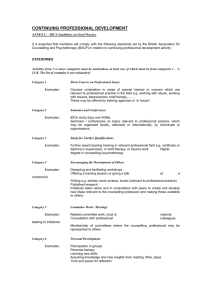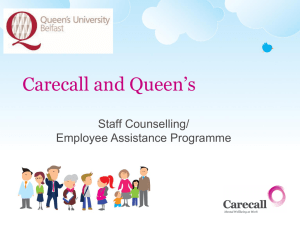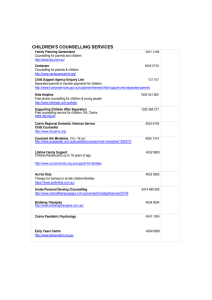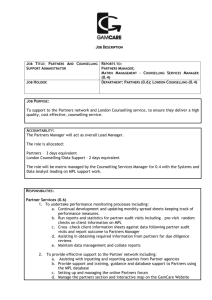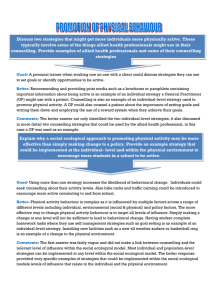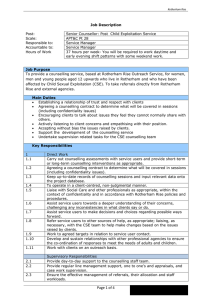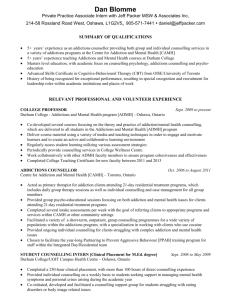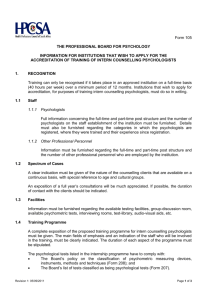PART 1
advertisement
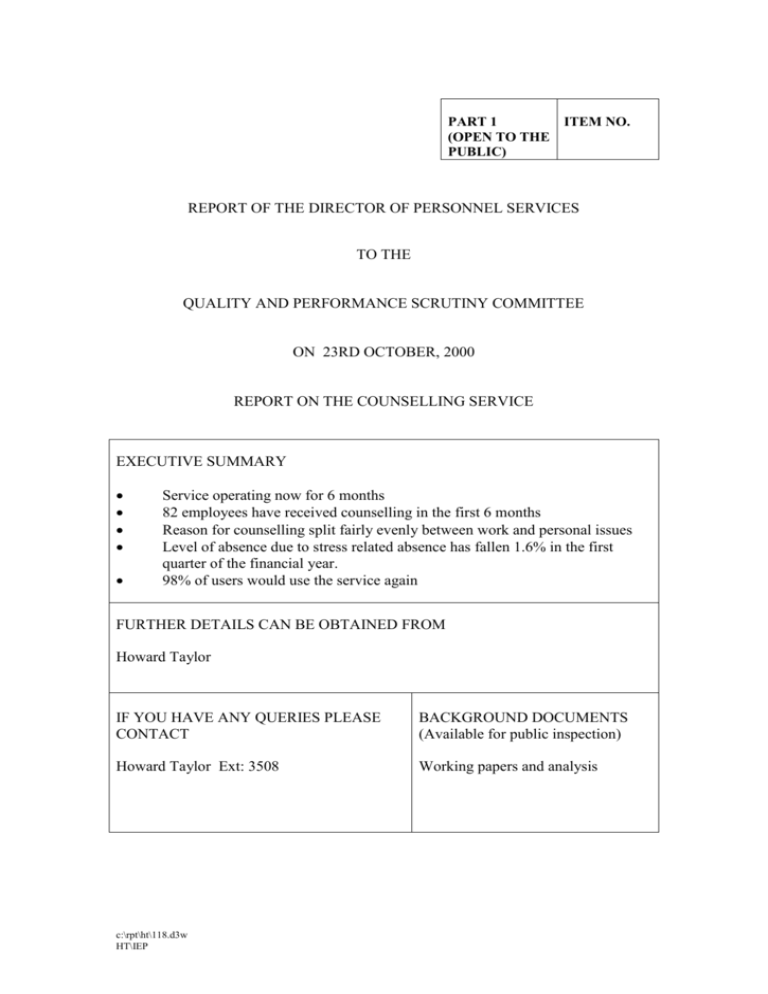
PART 1 ITEM NO. (OPEN TO THE PUBLIC) REPORT OF THE DIRECTOR OF PERSONNEL SERVICES TO THE QUALITY AND PERFORMANCE SCRUTINY COMMITTEE ON 23RD OCTOBER, 2000 REPORT ON THE COUNSELLING SERVICE EXECUTIVE SUMMARY Service operating now for 6 months 82 employees have received counselling in the first 6 months Reason for counselling split fairly evenly between work and personal issues Level of absence due to stress related absence has fallen 1.6% in the first quarter of the financial year. 98% of users would use the service again FURTHER DETAILS CAN BE OBTAINED FROM Howard Taylor IF YOU HAVE ANY QUERIES PLEASE CONTACT BACKGROUND DOCUMENTS (Available for public inspection) Howard Taylor Ext: 3508 Working papers and analysis c:\rpt\ht\118.d3w HT\IEP 1. RECOMMENDATIONS 1.1 THAT the report be noted. 2. PURPOSE This report details the usage of the Counselling service which has occurred during its first 6 months of operation i.e. April – September, 2000. 3. DETAIL 3.1 Having previously operated a Counselling Service on an ad hoc basis and with an increasing level of sickness absence due to Stress/Anxiety and related illness a decision was taken in late 1999 to expand the service on offer to employees. 3.2 Account was also taken of the increasing ligitigation in this area from employees of organisations where no attempts had been made to deal with the problems. The prime Local Government cases being those of Walker v Northumberland County Council and Lancaster v Birmingham City Council. 3.3 A working group had been operating amongst Safety Officers regionally at North Western Provincial Council level and a Counselling Firm BDMA had been identified as a potential provider who had experience within Local Government. 3.4 Following discussions with and presentations by BDMA and comparisons with other service providers it was agreed with Directorates that they would fund the provision of the service on a per capita basis of £4 per employee. In addition the Lead Member for Personnel also agreed that the service should be made available to Elected Members. The service has been made available to other organisations to whom we provide services and indeed has recently been used by the Lowry Centre. 3.5 Attached as Appendix 1 are details of the usage in the first 6 months of operation from which it will be seen that 82 employees from all Directorates have received Counselling. Appendix 2 details the reasons for the first 3 months in relation to the problems, age groups, gender ratio and effects on work which have been given. As Members will see reasons are split fairly evenly between Work Related and Personal issues (more than 1 reason can be given). The Counsellors would expect that the home/work split will vary with the time of year and the gender proportion of the client workload. Men usually report more workplace and less personal reasons. 3.6 In addition a 24 hour help line is provided but no record is kept of the number of calls which are received. -2- 3.7 Because of the anonymity of the service care has to be taken in obtaining feedback from clients on the value of the service. However, all clients receive a questionnaire at the close of their sessions and the initial feedback is attached at Appendix 3. Whilst up to 6 sessions would normally be provided the normal average number of sessions is 2.8%. As the service has only been operating for 6 months we do not have a Salford figure yet. Those employees who have shared with managers their experience of the service have indicated that they find it useful. In response to a BDMA questionnaire 98% of users have indicated that they would use the service again and 97% would recommend the service. 62% reported a positive or very positive effect on job performance and 87% the same effect on their employment of life. 3.8 One positive measure of its effectiveness may be the level of sickness absence due to stress related illness which has fallen from 15.29% in 1999/2000 to 13.60% in the first 3 months of this year. The overall sickness figure itself also shows a slight fall. However, great caution must be exercised in using the figure for one period. In addition it is not possible to tell whether or not without the service the absence level would have risen due to the level of pressure and change and uncertainty which is around due to changes in the way we work. c:\rpt\ht\118.d3w HT\IEP
